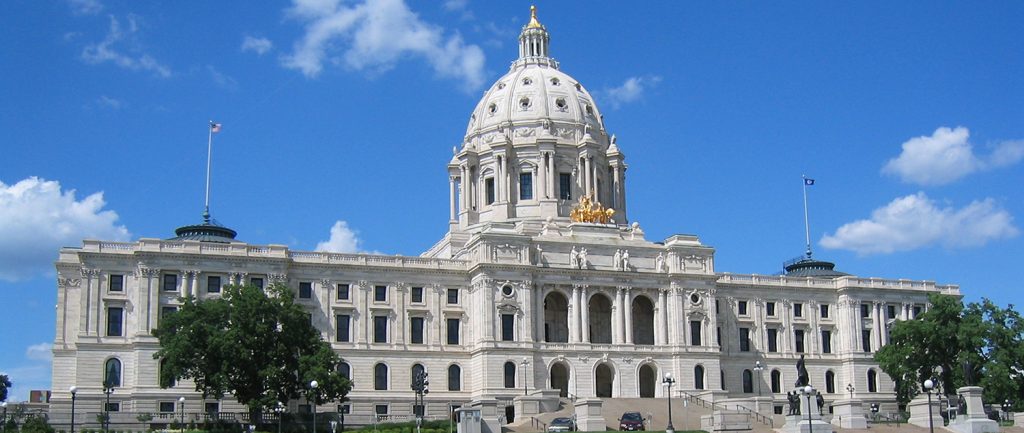On May 28, the White House released President Biden’s FY22 Budget to Congress. The proposed budget increases annual federal spending to $6 trillion starting in FY 2022 and builds on the $1.52 trillion discretionary spending request “skinny budget” that was released in April. The budget incorporates elements of the American Jobs Plan (infrastructure and broadband investment) and the American Families Plan (education and health care); addresses other issues such as climate, gun violence and immigration; and reforms the tax system for corporations and certain individuals.
“The President’s budget gives USDA a new set of tools to address the urgent challenges of our time—racial injustice, a changing climate, and hunger. When we invest fairly and equitably in American families and communities, we lay the foundation for decades of American prosperity,” Agriculture Secretary Tom Vilsack said. “The budget includes the two historic plans the President has already put forward — the Americans Jobs Plan and the American Families Plan — and reinvests in education, research, public health and other foundations of our country’s strength.”
The American Soybean Association’s policy team went through the budget and highlighted the soy and ag-related allotment list by federal agency.
Department of Agriculture
- The $27.9 billion USDA budget request for discretionary programs (those that require annual appropriations) represents a 16.7% increase over FY2021. Programs that receive mandatory spending make up the rest of USDA’s total $198 billion budget.
- In a departure from decades of presidents’ budget proposals, this budget does not propose cuts to the farm safety net or crop insurance. The budget proposal also maintains the status quo of current funding levels for the Market Access Program and the Foreign Market Development program, two programs which typically see large proposed cuts in presidential budgets.
- The president has proposed $914 million for climate resilience, research and clean energy programs at USDA. This includes $774 million for conservation technical assistance to help growers adopt climate-smart practices, $40 million for USDA’s climate hubs, $46 million to stand up the Civilian Climate Corps proposed in the President’s Executive Order on climate change, and $84 million (a $5 million increase) to boost NRCS soil mapping. The budget does not mention using the CCC to fund a carbon or climate bank.
- Continuing with the administration’s rural outreach efforts, the budget proposes an investment of $700 million to help connect rural and tribal communities to high-speed internet, including a $65 million increase for the Rural e-Connectivity Program “Reconnect” for rural broadband
- Fund for the Biotechnology Regulatory Service (BRS) remain at $19 million compared with previous years. The Bioengineered Food Disclosure Act would again receive $2 million for implementation, as in past years.
- The budget proposes a $1 billion investment at USDA to support biofuels generally in the Energy Assistance Program Account.
- The budget proposes investing $198 million – an $80 million increase over current spending – in the Agricultural Research Service Product Quality/Value Added account, including funding ongoing research to improve efficiency and reduce the cost of converting agricultural products into biobased products and biofuels.
Department of Transportation
- The $88 billion DOT base funding proposal reflects the President’s plan to boost infrastructure spending by 15%, but the budget request is kept separate from the American Jobs Plan. Included in this overall base proposal is $20.3 billion for roads and bridges.
- Of interest is a new $2 billion proposal for a research agency within DOT to boost innovation called the Advanced Research Projects Agency-Infrastructure (ARPA-I). The purpose of this increased focus on research is meant to help accelerate innovation, including improving the longevity of pavement – an opportunity for expanded use of soy-based products like sealants and asphalt alternatives.
Department of Treasury
- Like most presidential budget proposals, this request assumes that changes to the tax code paired with modest inflation and a rebounding economy will reduce overall deficits. However, even with the favorable math, the budget never balances.
- While the budget offers tax justifications to offset spending, broad changes to the tax code would ultimately have to be developed and negotiated by Congress.
Corps of Engineers – Civil Works
- For the overall Army Corps of Engineers’ Civil Works program, the budget proposes $6.8 billion in discretionary spending — including $52 million from the IWTF, $5 billion from the General Fund of the Treasury, and $1.6 billion — the highest amount ever requested — from the Harbor Maintenance Trust Fund.
- The President’s request includes $52.15 million from the Inland Waterways Trust Fund (IWTF) in FY22 for a new construction start for the Three Rivers project in Arkansas ($149 million in total).
Environmental Protection Agency
- EPA’s budget would increase 22% (representing the largest budget ever). $1.8 billion is earmarked for climate change programs.
- The agency’s nonpoint source grant program would get a small $3 million increase (to $180 million) to address agricultural nonpoint source pollution.
- The budget calls for a $246,000 increase for the pesticide program, and a $480,000 increase for pesticide enforcement largely in the form of state grants. Both represent a 2% increase.




